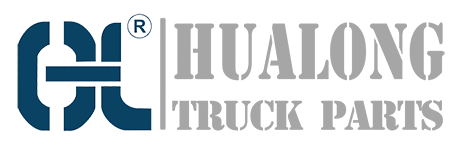What is a Pressure Relief Vacuum Valve?
A pressure relief vacuum valve, also known as a PRV valve, is a crucial component in many industrial and commercial systems. It is designed to protect equipment and systems from potential damage caused by excessive pressure or vacuum conditions. This valve works by automatically opening when pressure or vacuum levels exceed a predetermined set point, allowing the release or entry of air or gas to maintain the desired pressure within safe limits.
How Does a Pressure Relief Vacuum Valve Work?
The basic principle behind the operation of a pressure relief vacuum valve is relatively simple. The valve consists of a diaphragm or a spring-loaded disc that is held in place by an adjustable set pressure. When the pressure or vacuum in the system exceeds the set point, the diaphragm or disc is lifted, allowing gases or air to escape or enter the system, thereby relieving the excess pressure or vacuum. Once the pressure or vacuum returns to a safe level, the valve closes, preventing any further release or entry of gases or air.
The Importance of Pressure Relief Vacuum Valves
Pressure relief vacuum valves play a critical role in various industries and applications. Here are some key reasons why they are essential:
- Equipment Protection: Pressure relief vacuum valves prevent damage to equipment and systems by ensuring pressure or vacuum levels remain within safe limits. Excessive pressure or vacuum can lead to catastrophic failures, compromising the integrity and functionality of the equipment.
- Safety: PRV valves help maintain a safe working environment by preventing the build-up of dangerous pressure or vacuum conditions. This is particularly important in systems handling hazardous substances or operating at high temperatures.
- Process Efficiency: By regulating pressure or vacuum levels, these valves help optimize process efficiency and performance. They ensure systems operate at their intended pressure, preventing inefficiencies, and minimizing energy waste.
Types of Pressure Relief Vacuum Valves
There are several types of pressure relief vacuum valves available, each designed to suit specific applications and requirements. Here are a few commonly used types:
1. Spring-Loaded Pressure Relief Vacuum Valves
Spring-loaded PRV valves utilize a spring to maintain the desired set pressure. When the pressure exceeds the set point, the spring pushes against the diaphragm or disc, allowing excess gases or air to escape. These valves are commonly used in applications where the set pressure remains relatively constant.
2. Pilot-Operated Pressure Relief Vacuum Valves
Pilot-operated PRV valves use a combination of a pilot valve and a main valve to control pressure relief. The pilot valve senses and responds to changes in pressure, allowing the main valve to open or close accordingly. These valves are often used in applications where precise pressure control is required.
3. Vacuum Relief Valves
Vacuum relief valves, also known as vacuum breakers, are designed to prevent the creation of a vacuum within a system or equipment. They allow air to enter the system when a vacuum condition occurs, preventing potential damage or collapse.
4. Pressure/Vacuum Relief Valves
Pressure/vacuum relief valves are versatile valves that can handle both pressure relief and vacuum relief functions. They provide protection against both excessive pressure and vacuum conditions, making them suitable for a wide range of applications.
Considerations for Selecting a Pressure Relief Vacuum Valve
Choosing the right pressure relief vacuum valve is crucial to ensure optimal performance and system safety. Here are some factors to consider:
- Operating Conditions: Evaluate the pressure and vacuum levels, temperature range, and the type of gas or fluid being handled to select a valve that can withstand the specific operating conditions.
- Set Pressure Range: Determine the required set pressure range for your system and choose a valve that can be adjusted to meet your specific needs.
- Flow Capacity: Consider the flow rate requirements of your system to ensure the selected valve can handle the required volume without causing excessive pressure drops.
- Material Compatibility: Ensure the valve materials are compatible with the substances being handled to prevent corrosion, contamination, or other adverse effects.
Installation and Maintenance of Pressure Relief Vacuum Valves
Proper installation and regular maintenance are vital to ensure the effective and reliable operation of pressure relief vacuum valves. Here are some key considerations:
- Installation: Follow the manufacturer's guidelines for installation, ensuring the valve is properly sized, positioned, and connected to the system.
- Periodic Testing: Regularly test the valve to ensure it is functioning correctly and within the specified set pressure range.
- Cleaning and Inspection: Clean and inspect the valve periodically to remove any debris or buildup that could affect its performance.
- Replacement: If a valve is damaged, malfunctioning, or no longer meets the system requirements, it should be replaced promptly to maintain system integrity.
In Conclusion
Pressure relief vacuum valves are vital components in many industrial and commercial systems. They provide protection against excessive pressure or vacuum conditions, ensuring equipment safety and efficient operation. By understanding the different types of valves, considering the selection factors, and performing proper installation and maintenance, you can optimize the performance and reliability of your system.

